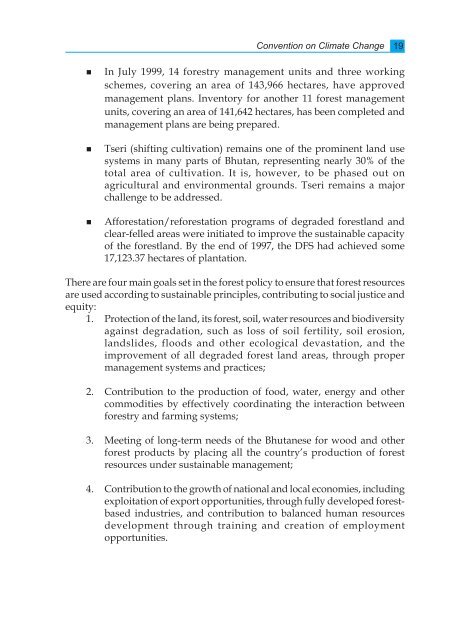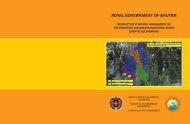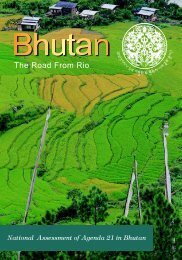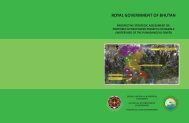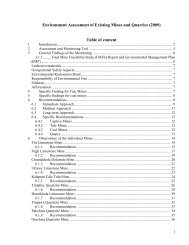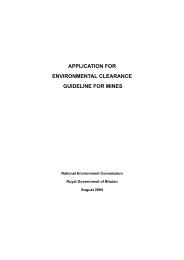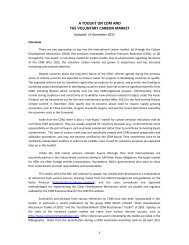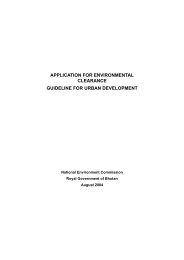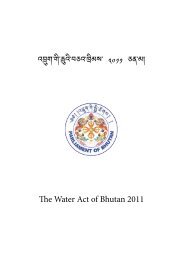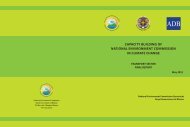Initial National Communication, under UNFCCC, September 2000
Initial National Communication, under UNFCCC, September 2000
Initial National Communication, under UNFCCC, September 2000
You also want an ePaper? Increase the reach of your titles
YUMPU automatically turns print PDFs into web optimized ePapers that Google loves.
Convention on Climate Change 19<br />
31<br />
In July 1999, 14 forestry management units and three working<br />
schemes, covering an area of 143,966 hectares, have approved<br />
management plans. Inventory for another 11 forest management<br />
units, covering an area of 141,642 hectares, has been completed and<br />
management plans are being prepared.<br />
Tseri (shifting cultivation) remains one of the prominent land use<br />
systems in many parts of Bhutan, representing nearly 30% of the<br />
total area of cultivation. It is, however, to be phased out on<br />
agricultural and environmental grounds. Tseri remains a major<br />
challenge to be addressed.<br />
Afforestation/reforestation programs of degraded forestland and<br />
clear-felled areas were initiated to improve the sustainable capacity<br />
of the forestland. By the end of 1997, the DFS had achieved some<br />
17,123.37 hectares of plantation.<br />
There are four main goals set in the forest policy to ensure that forest resources<br />
are used according to sustainable principles, contributing to social justice and<br />
equity:<br />
1. Protection of the land, its forest, soil, water resources and biodiversity<br />
against degradation, such as loss of soil fertility, soil erosion,<br />
landslides, floods and other ecological devastation, and the<br />
improvement of all degraded forest land areas, through proper<br />
management systems and practices;<br />
2. Contribution to the production of food, water, energy and other<br />
commodities by effectively coordinating the interaction between<br />
forestry and farming systems;<br />
3. Meeting of long-term needs of the Bhutanese for wood and other<br />
forest products by placing all the country’s production of forest<br />
resources <strong>under</strong> sustainable management;<br />
4. Contribution to the growth of national and local economies, including<br />
exploitation of export opportunities, through fully developed forestbased<br />
industries, and contribution to balanced human resources<br />
development through training and creation of employment<br />
opportunities.


